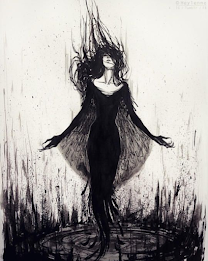LILITH - MORE THAN JUST A DEMON!
One prominent narrative depicts her as Adam's first wife, created equal to him from the dust of the earth. However, she refused to be subservient, demanding equality in their relationship. This act of defiance challenged the established gender hierarchy, leading to her expulsion from Eden and subsequent demonization.
While the portrayal of Lilith as a demonic seductress persists in some interpretations, feminist and scholarly perspectives offer a more nuanced understanding. They highlight her rebellion against subjugation, her pursuit of autonomy, and her refusal to conform to prescribed gender roles. This perspective celebrates her as a symbol of female empowerment and independence.
Today, Lilith continues to resonate with individuals seeking a deeper understanding of femininity, sexuality, and the human spirit. She inspires artists, writers, and activists who celebrate her spirit of defiance and her embrace of the unconventional. From feminist literature to contemporary art, her image is reclaimed and reinterpreted, challenging traditional narratives and sparking conversations about gender equality and individual agency.


Comments
Post a Comment